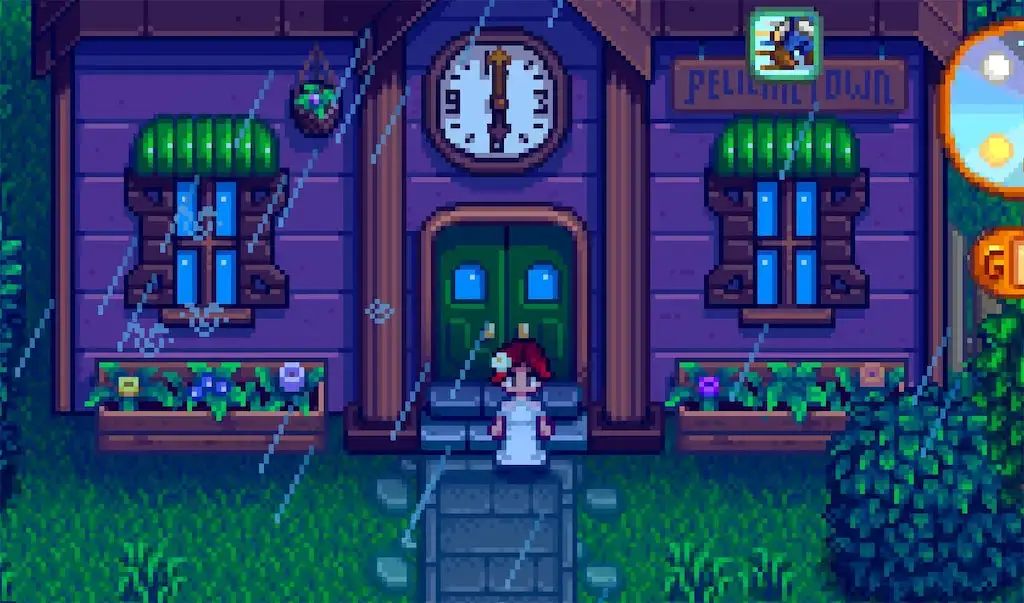Stardew Valley Bundles Guide: Complete by Season
Hello fellow Stardew Valley players! Today, we’ll discuss the order of completing Bundles in the game. We’ll cover what to prepare first, what to prepare later, and what to do in each season as a reference for all of you.

Spring:
- The Spring Foraging Bundle in the Crafts Room is always the first to be completed. You can definitely finish it within the first week, but there’s no need to rush to donate it. Save the spring seeds or bundle them up to donate later, even when the minecarts are unlocked.
- There are three choices for the second bundle: a. The Construction Bundle in the Crafts Room, which can be completed once you’ve upgraded your axe and visited the mines. b. The Spring Crops Bundle in the Pantry, which you can start on the first day by planting the four required crops. By doing this, you can complete it by the 13th day or plant them after the 5th day and focus on other bundles first. c. The Crab Pot Bundle in the Fish Tank, which depends on your luck with killing Rock Crabs and finding the necessary items at the beach.
Usually, completing the minecarts and Vault bundles involves choosing one of the three options above. After unlocking two bundles, you can finish the Boiler Room Bundle. Reach level 80 in the mines to repair the minecarts. Even if you have already found gold ore and fire quartz through fishing, it’s still recommended to reach level 80 in the mines.
The remaining tasks for spring are collecting fish for the Fish Tank Bundle. A separate tutorial has been covered for fish collection, so we won’t go into detail here. As for the Vault Bundle, it depends on your strategy and financial situation. The sooner you complete it, the better, as it rewards you with lightning rods and 30 quality fertilizers, which are useful for the Quality Crops Bundle.
Summer:
- Complete the Summer Foraging Bundle and the Summer Crops Bundle in the Pantry.
- Prepare high-quality melons and corn using quality fertilizer. Plant a few sunflowers and poppies as well. Plant extra wheat on vacant land to solve both the wheat and hay problems.
- Plant an apple tree around the 10th day. If you don’t have the Bat Cave, plant a pomegranate tree as well. By mid-season, build a coop and a barn. If you don’t have enough resources, you can purchase them from Robin. If you’re short on money, raise the animals later. The barn can house cows and pigs.
- For the coop, get one chicken of each color. If you’re concerned about luck, get two ducks and two rabbits. Upgrade your house to make Sashimi and Fried Egg. Remember to collect fiddlehead ferns from the Secret Woods.
- If you’re progressing slowly or don’t want to farm Red Cabbage seeds, you can wait until the end of winter to raise pigs in a level one barn.
Autumn:
- Complete the Fall Foraging Bundle and the Fall Crops Bundle.
- Plant a large number of pumpkins to complete the Quality Crops Bundle by mid-autumn, which should unlock the greenhouse. The Fish Tank Bundle can also be completed in the fall since there are no fish exclusive to winter.
Winter:
- Complete the Winter Foraging Bundle and acquire the Nautilus Shell. The Winter Foraging Bundle can be completed ahead of time by using Winter Seeds in the greenhouse.
- Exchange Spring Seeds for Winter Seeds at the Desert Trader or use a Seed Maker with a Forage item.
- Improve your relationship with Demetrius, who will send you a Nautilus Shell in the mail.
Red Cabbage is only sold consistently by Pierre in the second year’s summer. If you want it earlier, you’ll need to fight monsters in the desert. Purple Slimes, Flying Serpents, and Mummies can all drop Red Cabbage seeds. Therefore, the two hardest items to obtain are Red Cabbage and Nautilus Shell. Animal products often require high costs, so if you can purchase these items from the Traveling Cart, it can save you a lot of trouble.
If you feel the animal husbandry part of the discussion is not detailed enough, you can refer to our previous tutorial on the Pantry Bundles, as well as the tutorial on Bat Caves and Mushroom Caves. For a more detailed timeline, you can check out my comprehensive Bundle tutorial.
That concludes this tutorial. We’ll see you in the next one!